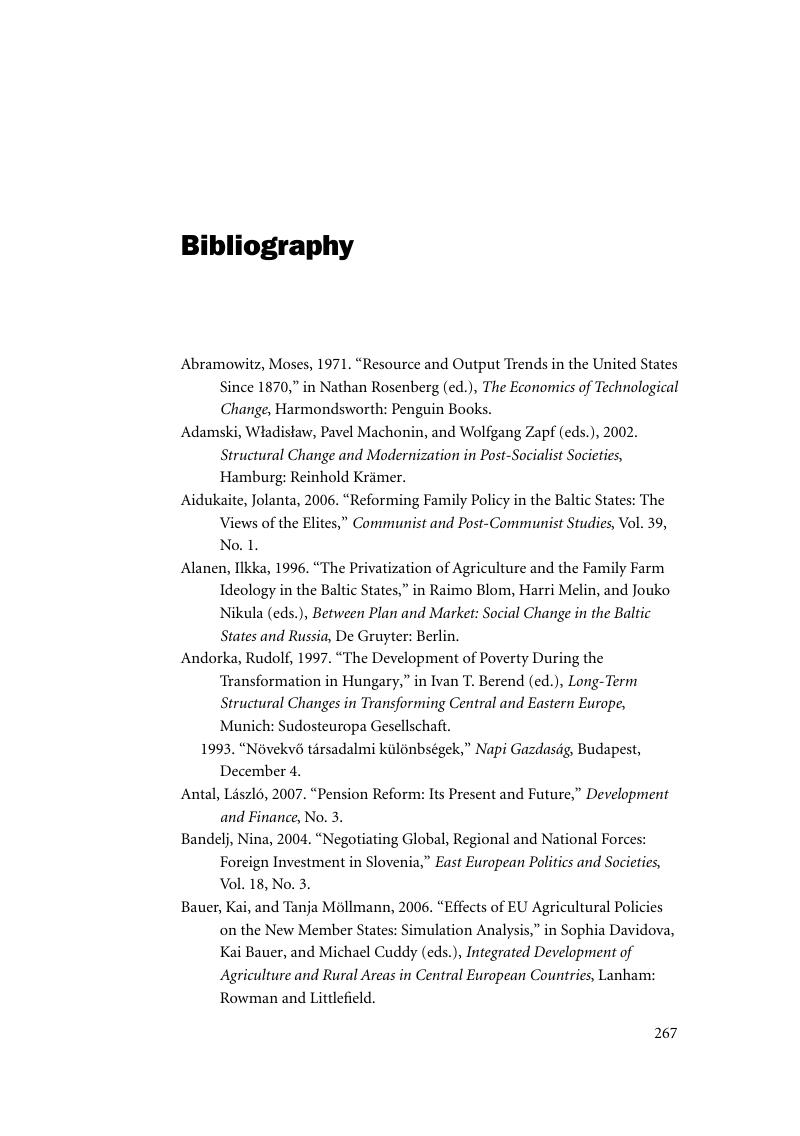 From the Soviet Bloc to the European Union
From the Soviet Bloc to the European Union Book contents
- Frontmatter
- Contents
- List of figures
- List of tables
- List of boxes
- Preface
- Introduction
- 1 The economic factors in the collapse of state socialism and the new international environment, 1973–1989
- 2 Radical transformation and policy mistakes: dramatic economic decline in the early 1990s
- 3 Toward better times: the European Union and its policy of eastward enlargement
- 4 Recuperation and growth: the role of foreign direct investment
- 5 Economic restructuring: transforming main sectors, economic recovery, growth, and weaknesses
- 6 Transformation and social shock
- 7 Lasting changes in the structure of income, employment, welfare institutions, education, and settlement
- 8 Epilogue: the future of catching up in the European “melting pot”
- Bibliography
- Index
- References
Bibliography
Published online by Cambridge University Press: 05 June 2012
- Frontmatter
- Contents
- List of figures
- List of tables
- List of boxes
- Preface
- Introduction
- 1 The economic factors in the collapse of state socialism and the new international environment, 1973–1989
- 2 Radical transformation and policy mistakes: dramatic economic decline in the early 1990s
- 3 Toward better times: the European Union and its policy of eastward enlargement
- 4 Recuperation and growth: the role of foreign direct investment
- 5 Economic restructuring: transforming main sectors, economic recovery, growth, and weaknesses
- 6 Transformation and social shock
- 7 Lasting changes in the structure of income, employment, welfare institutions, education, and settlement
- 8 Epilogue: the future of catching up in the European “melting pot”
- Bibliography
- Index
- References
Summary

- Type
- Chapter
- Information
- From the Soviet Bloc to the European UnionThe Economic and Social Transformation of Central and Eastern Europe since 1973, pp. 267 - 287Publisher: Cambridge University PressPrint publication year: 2009


